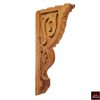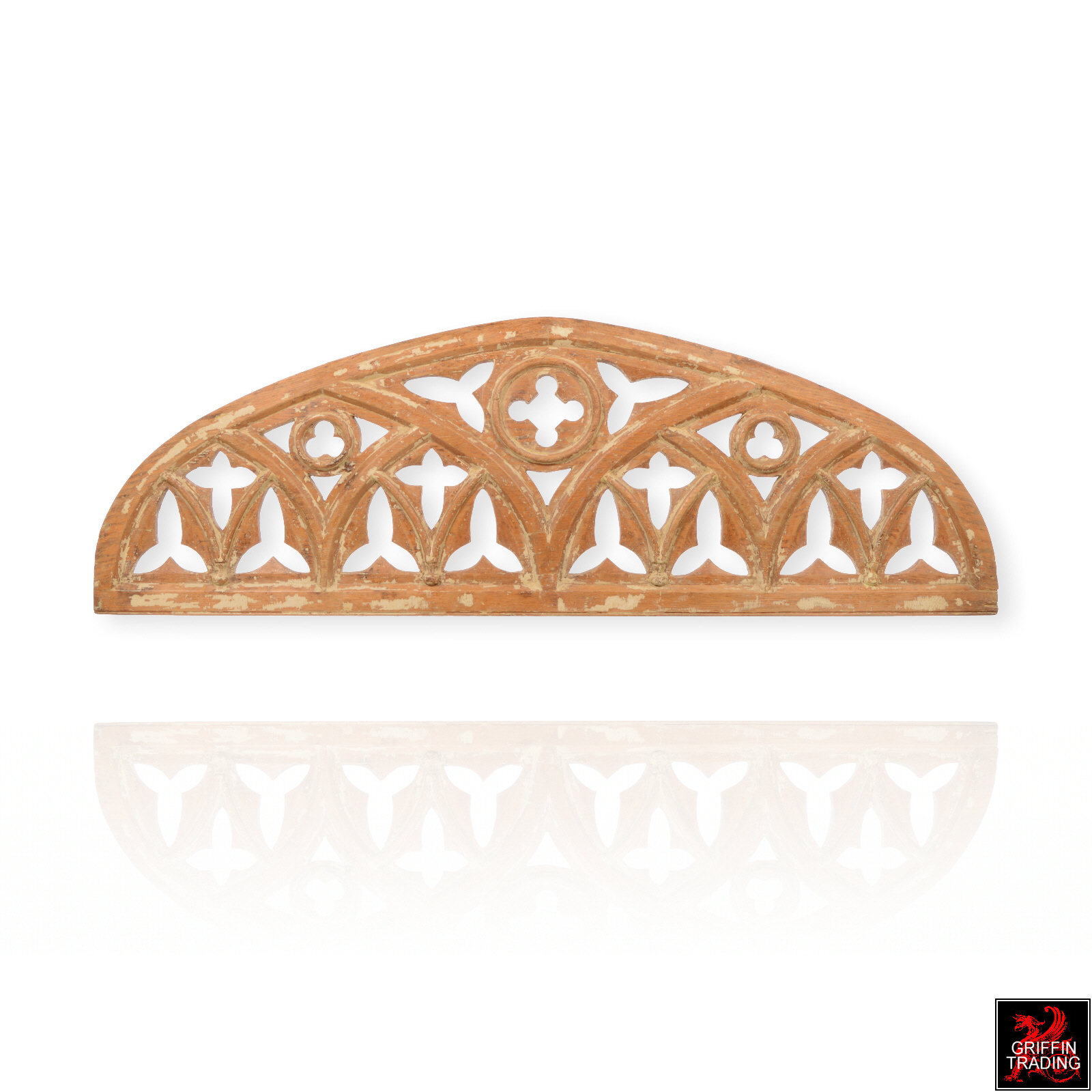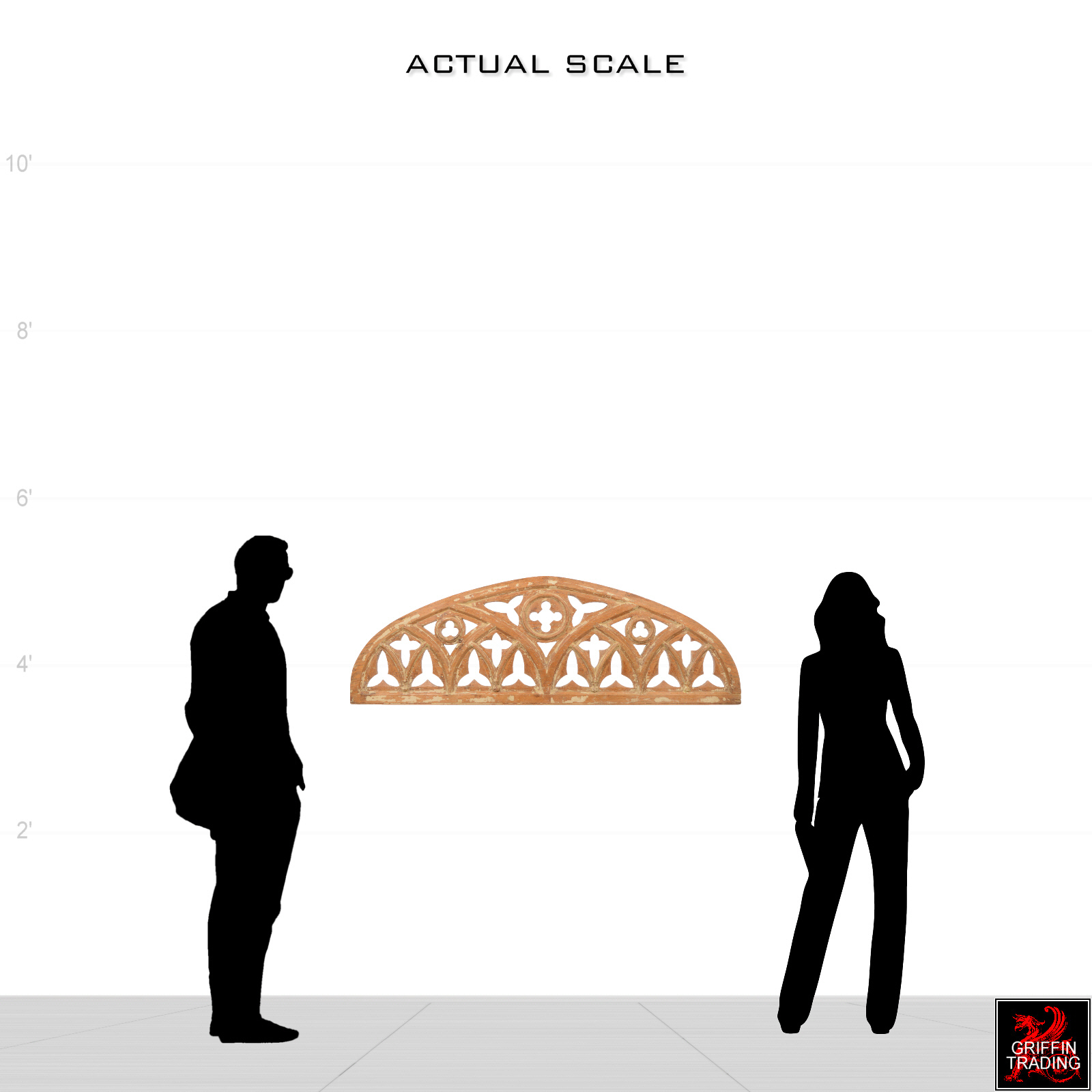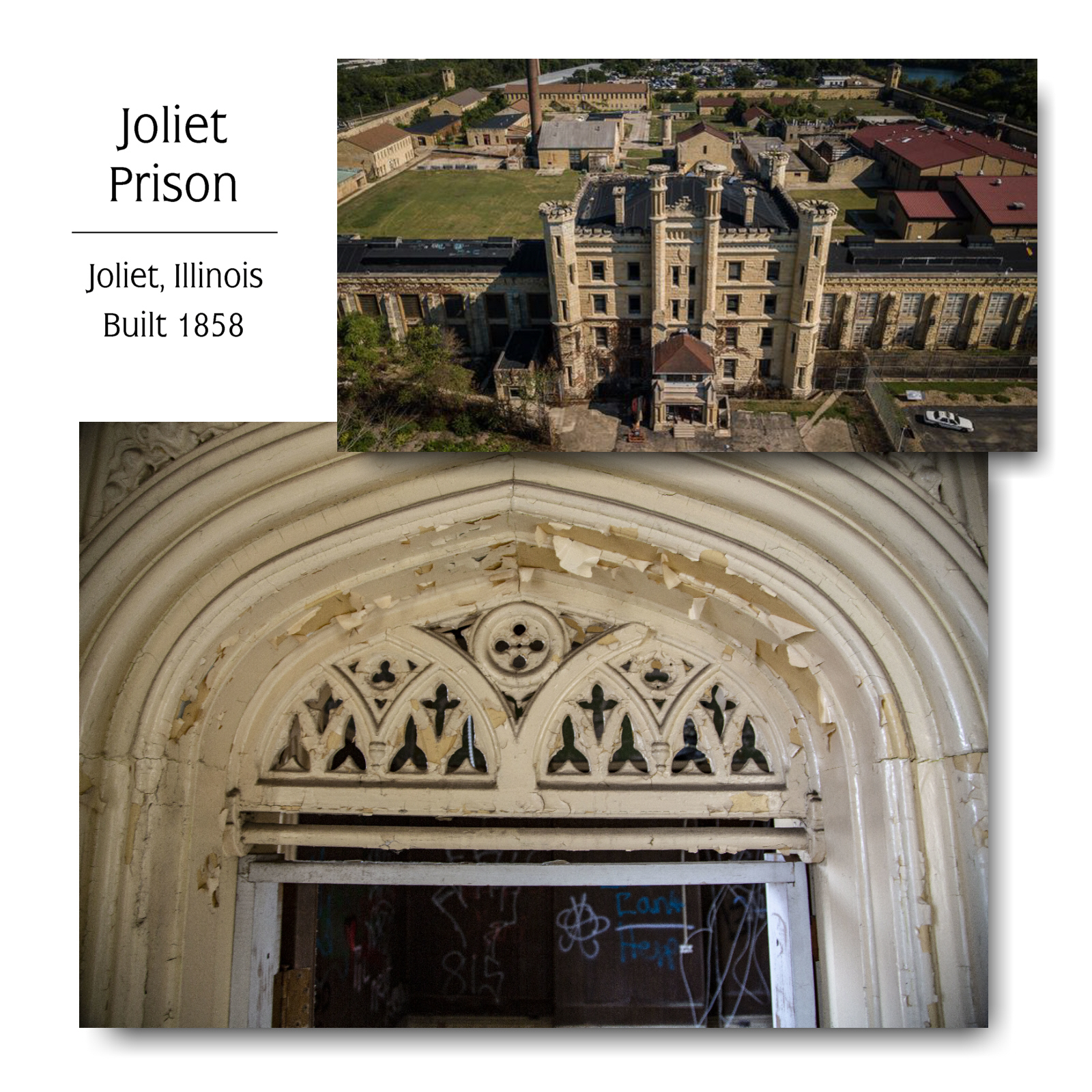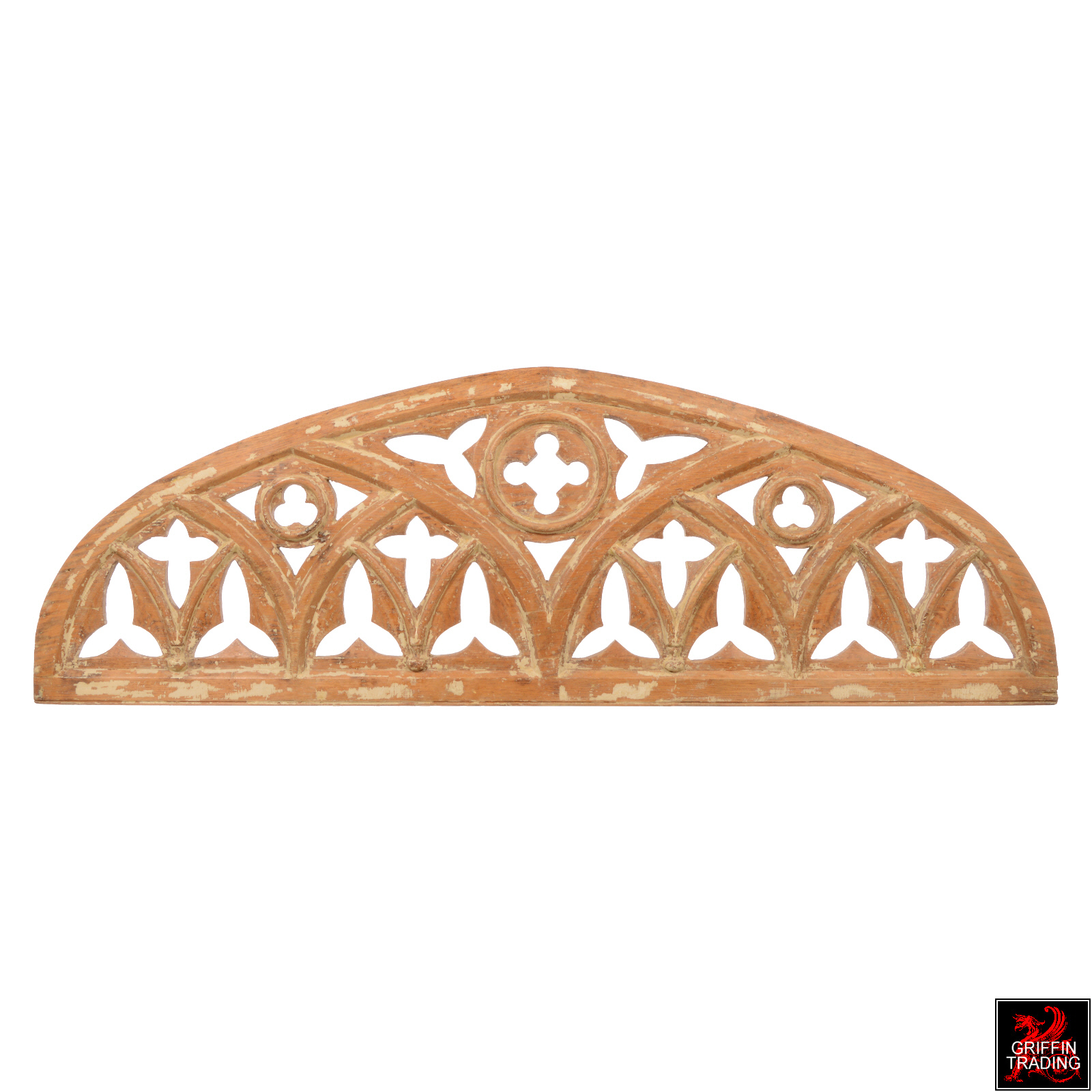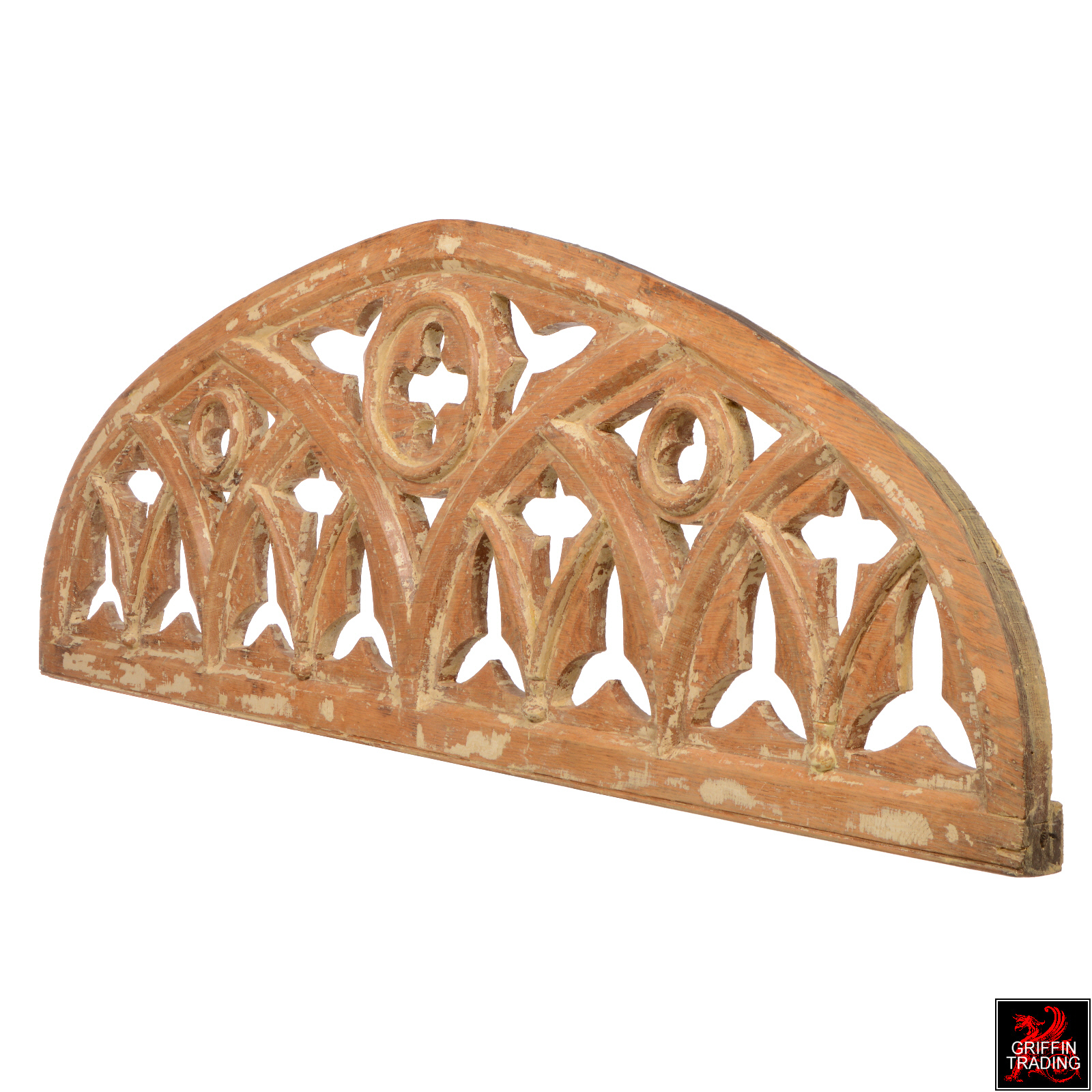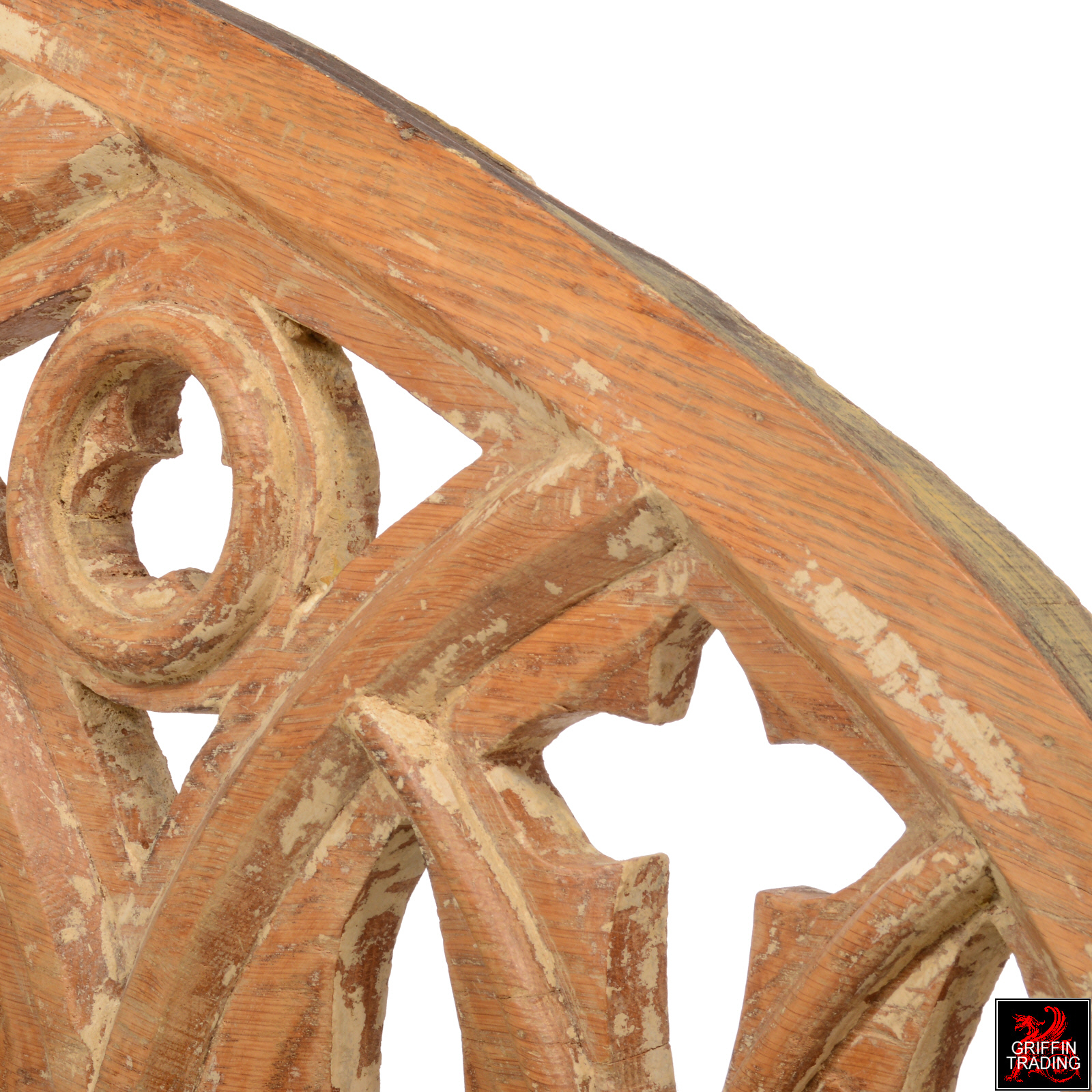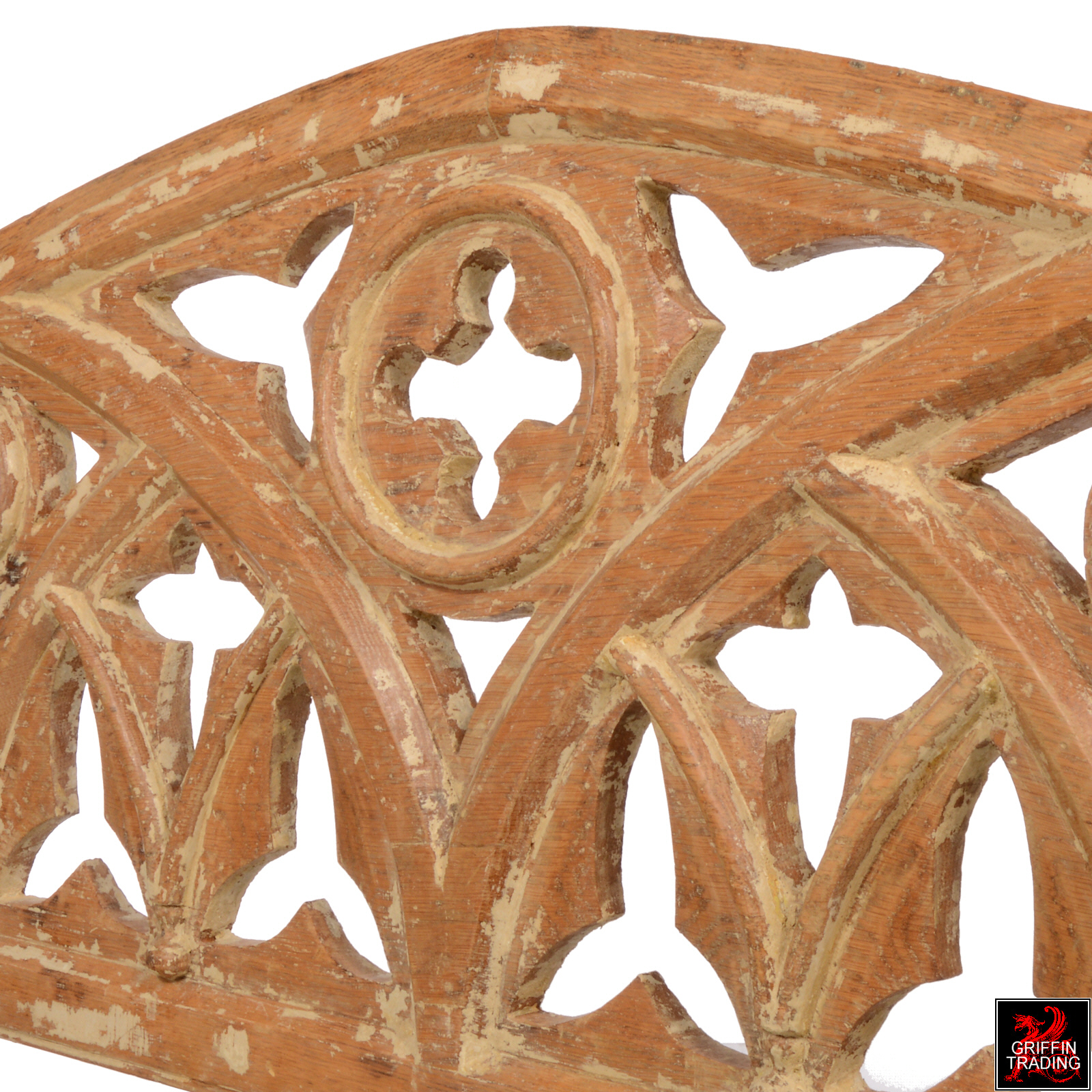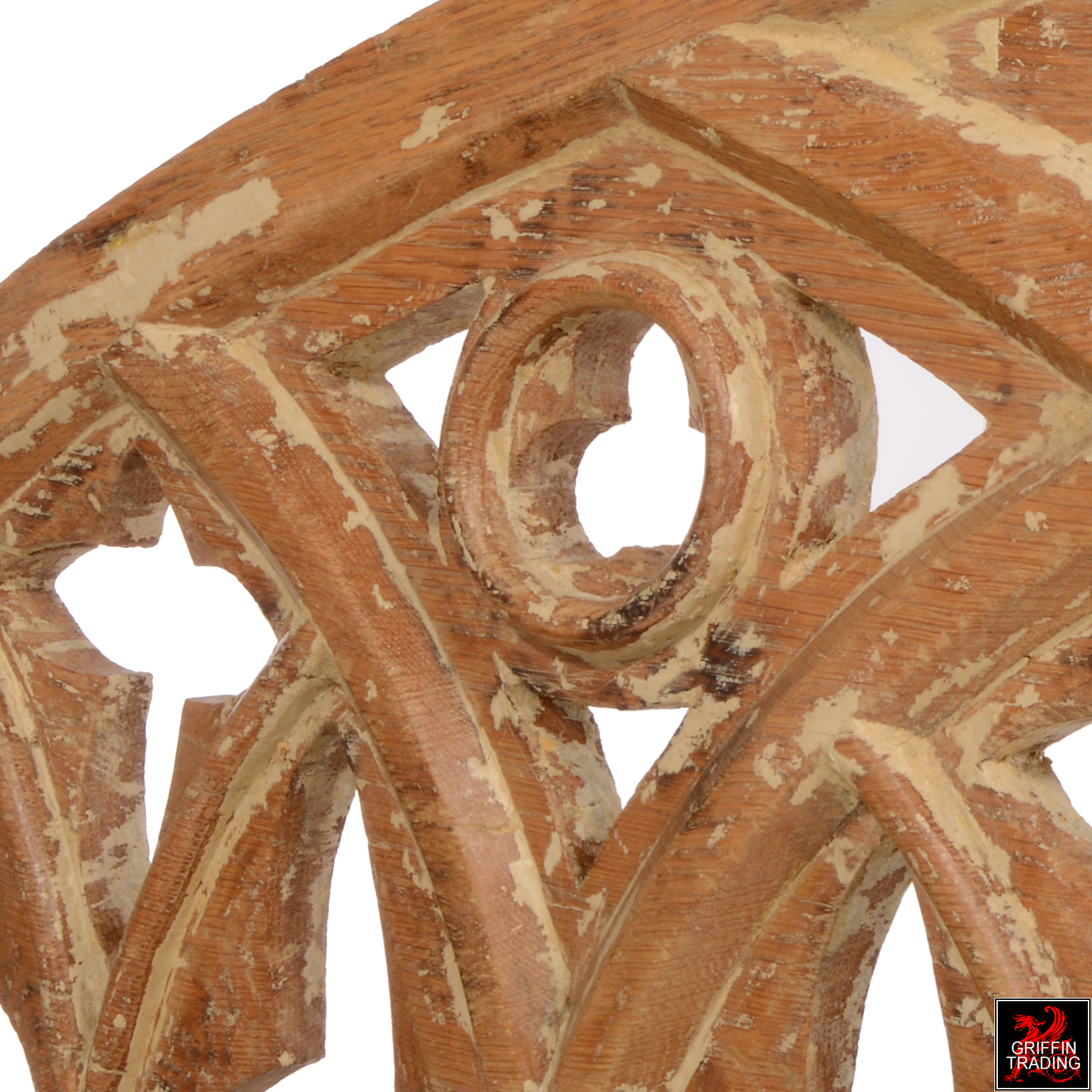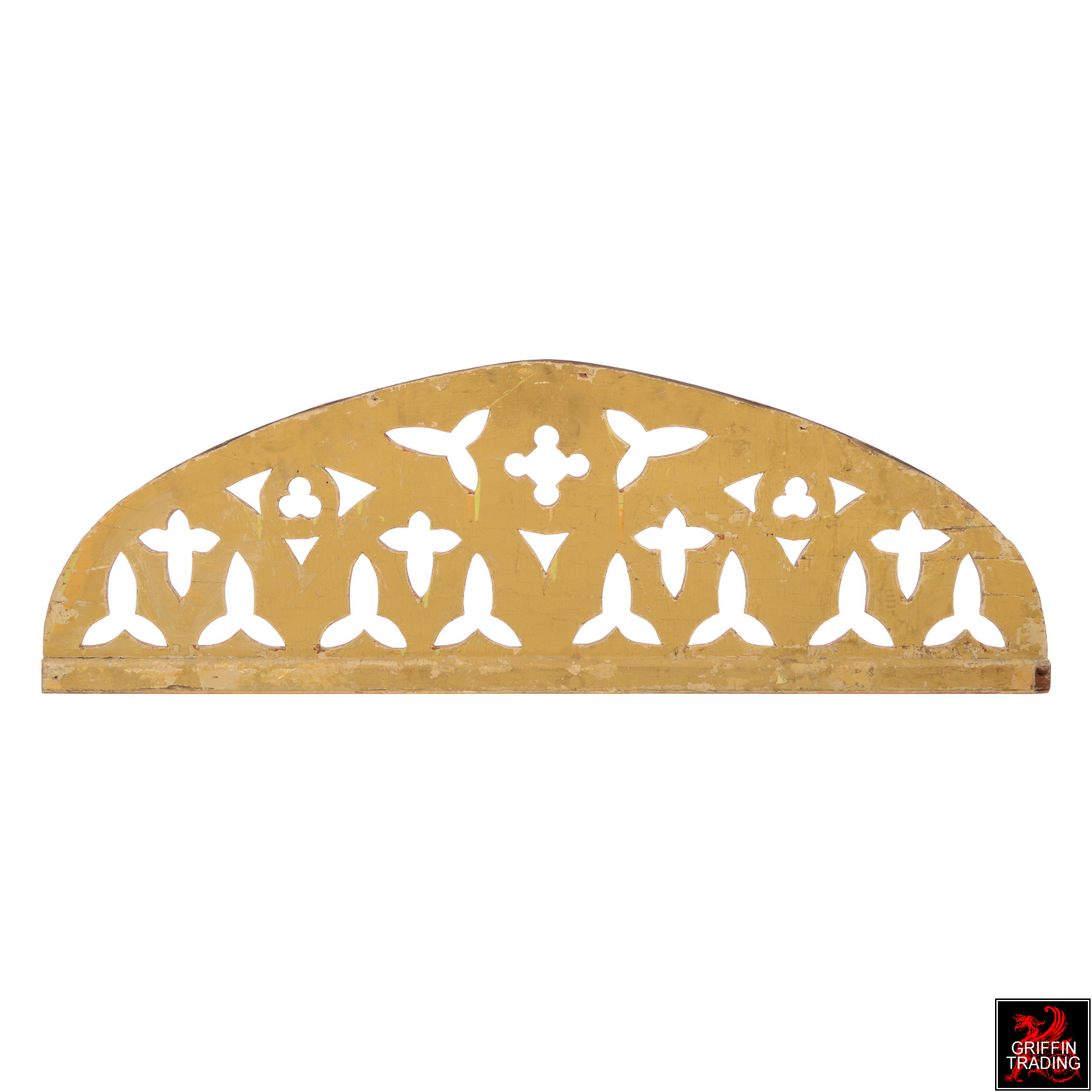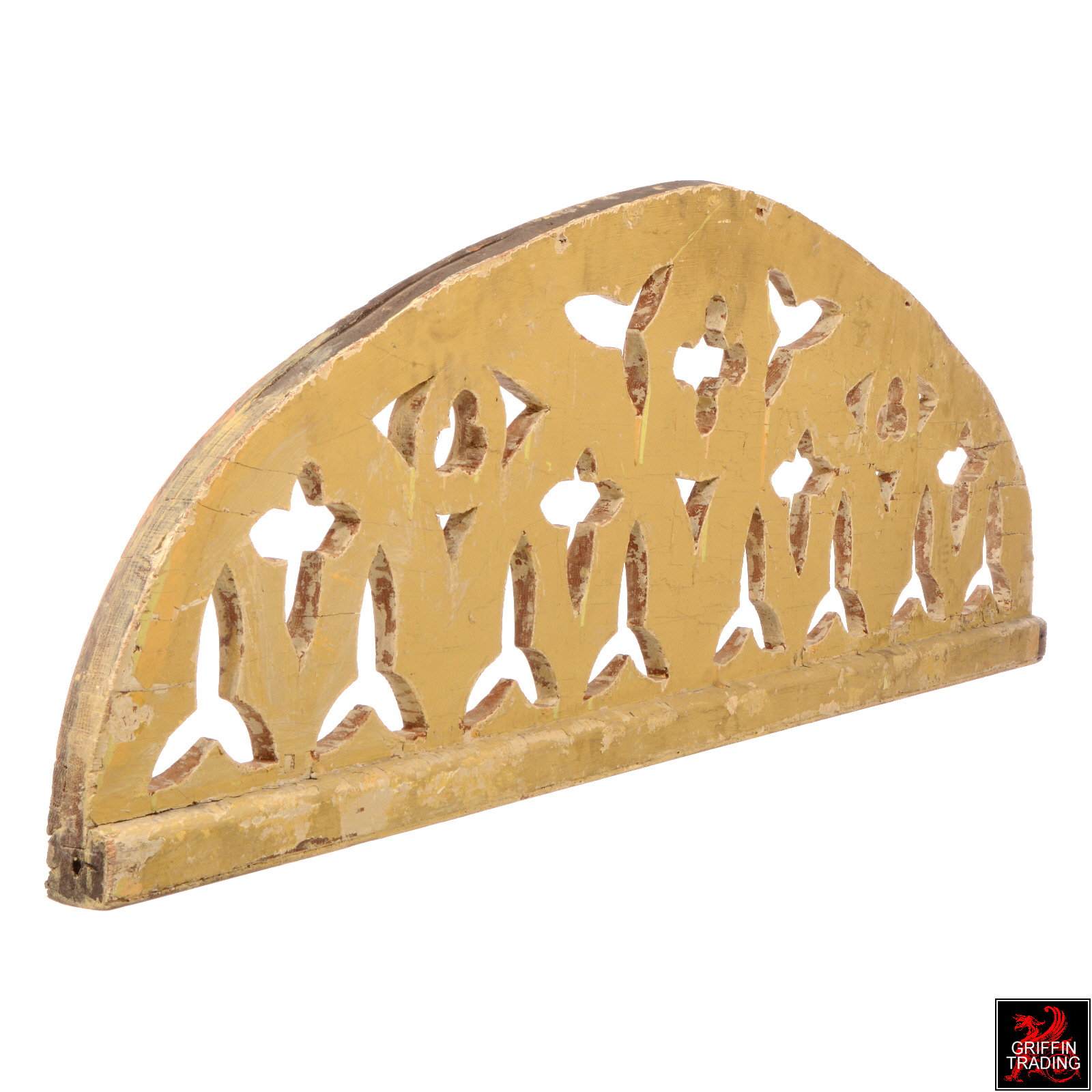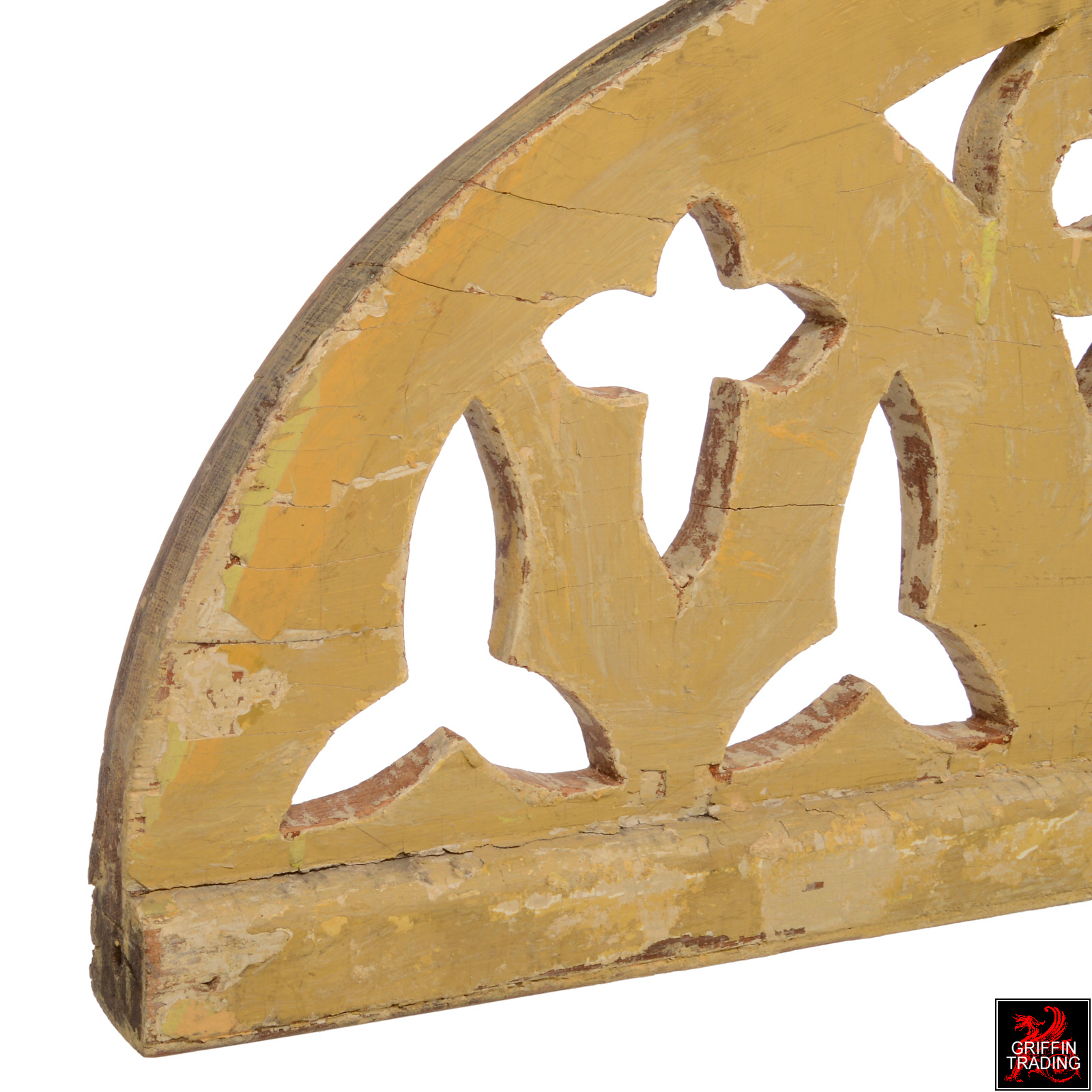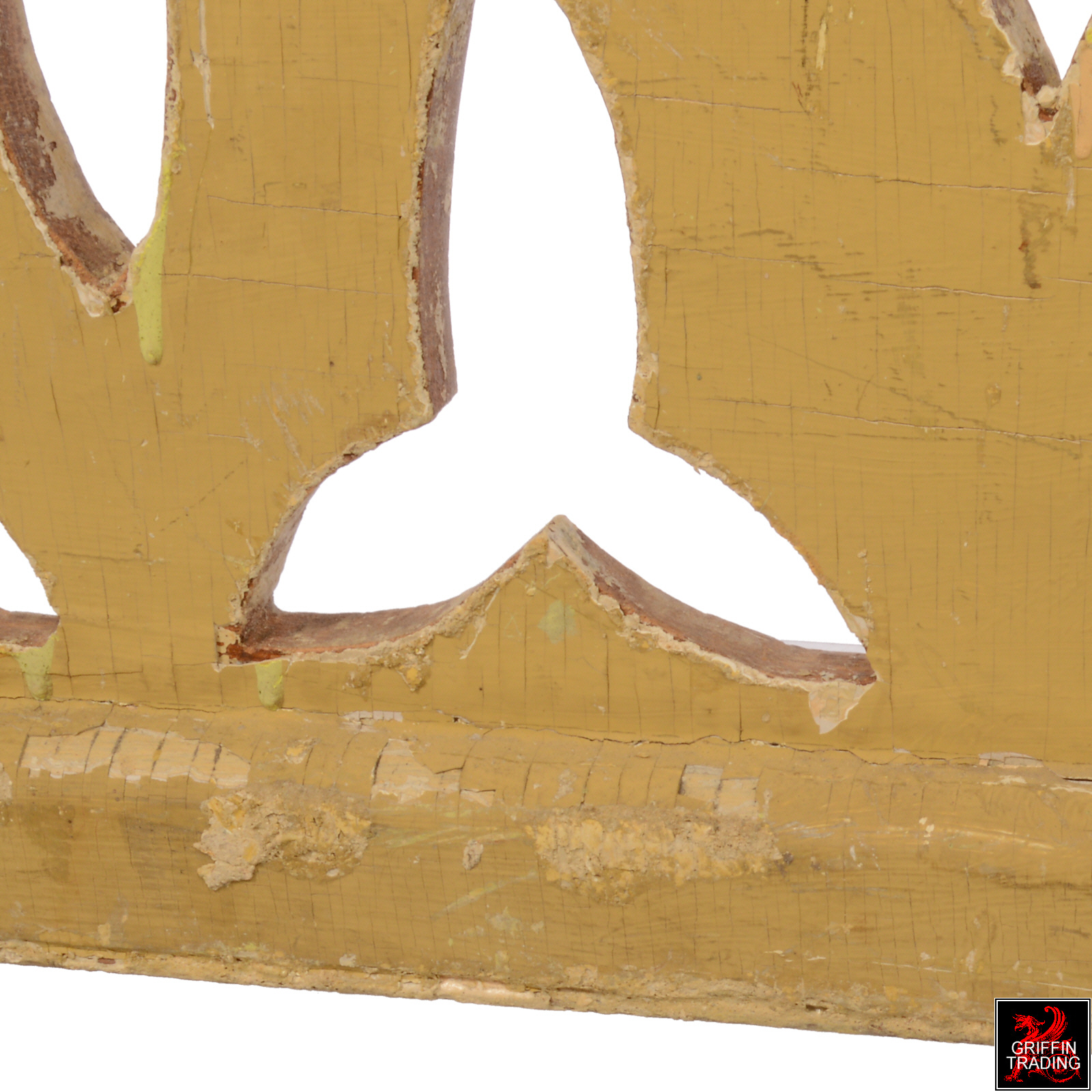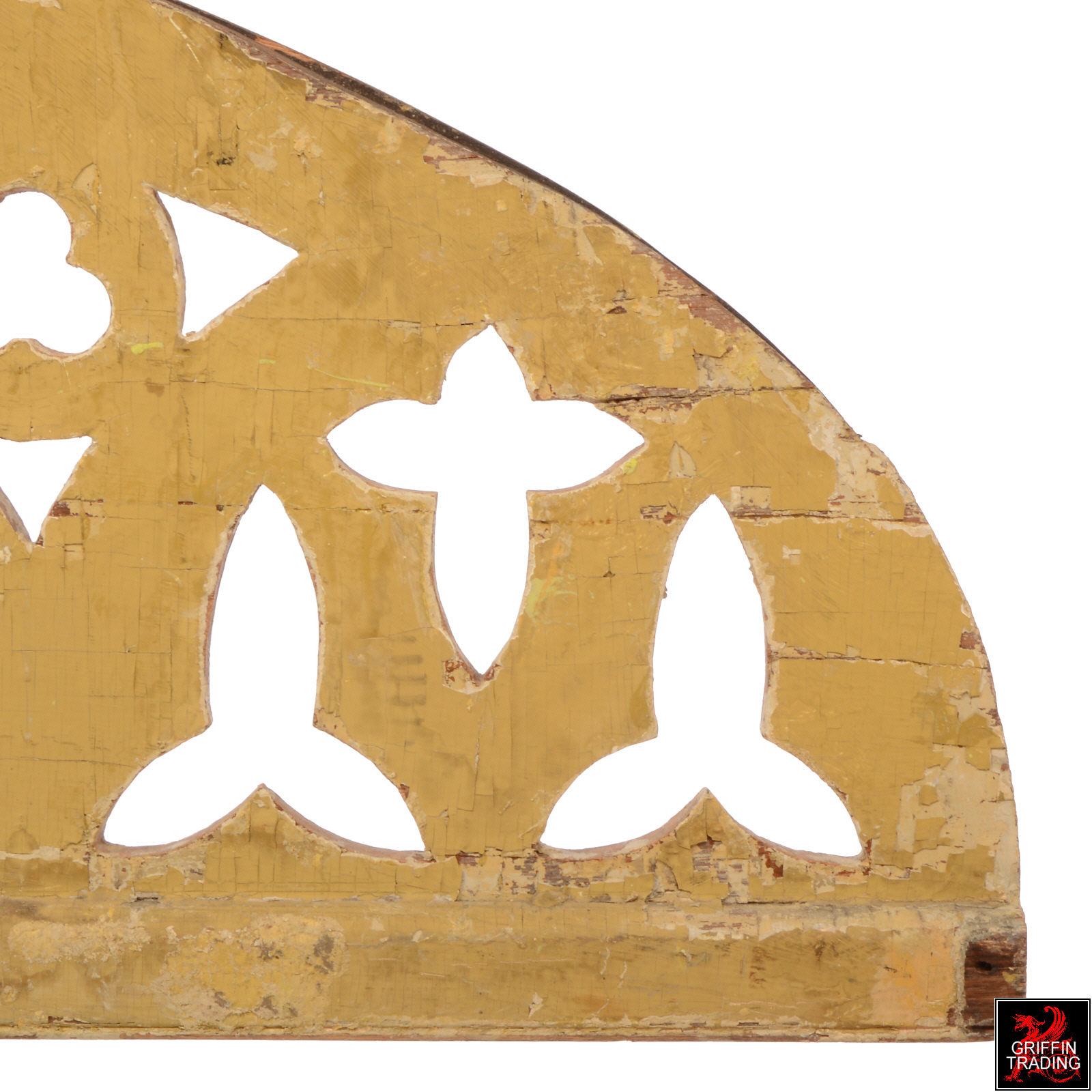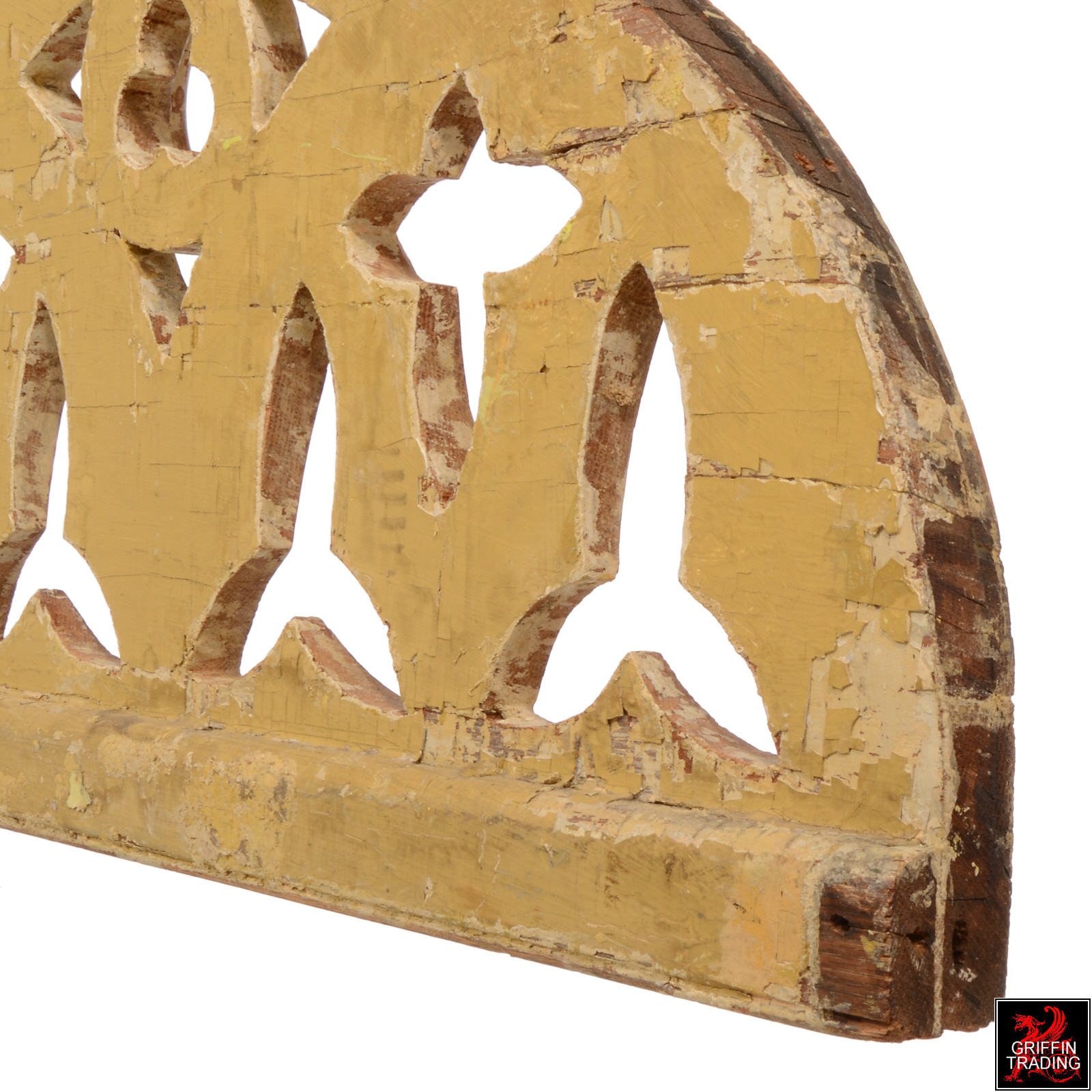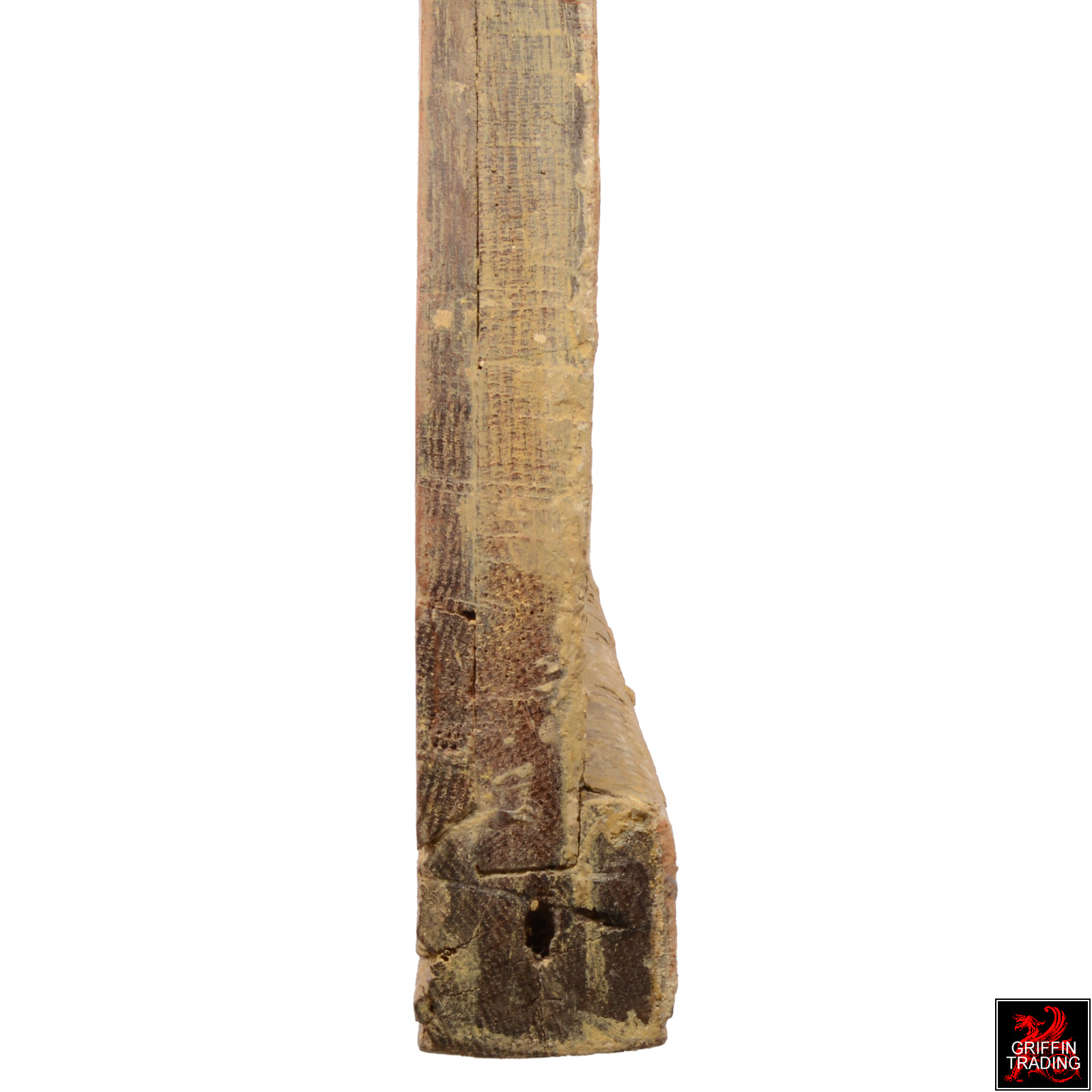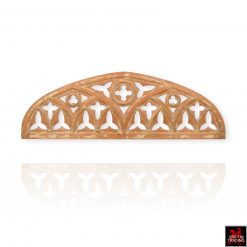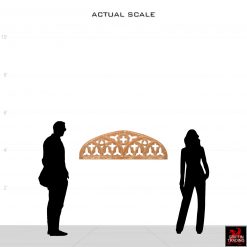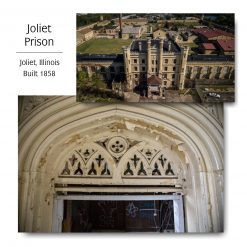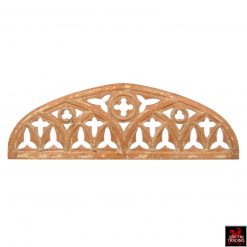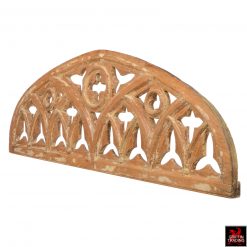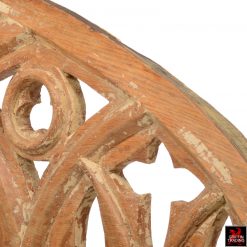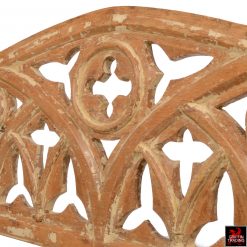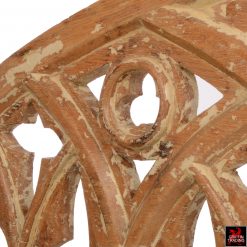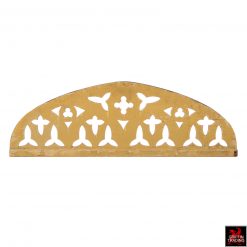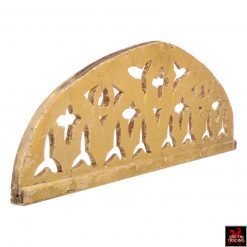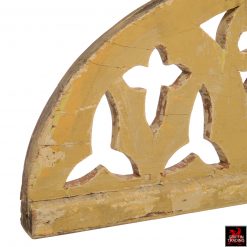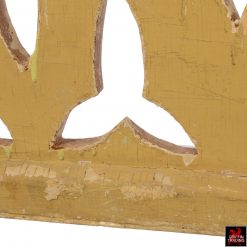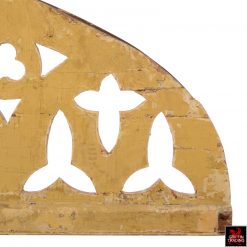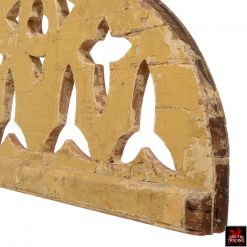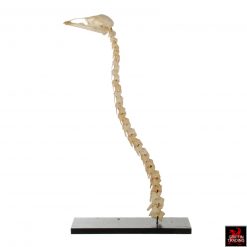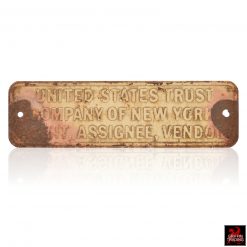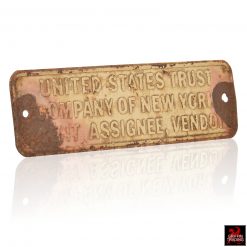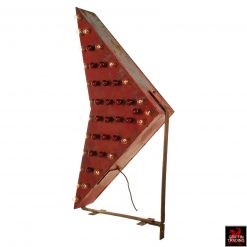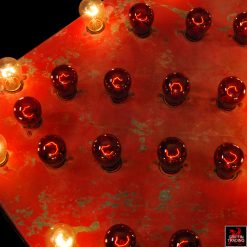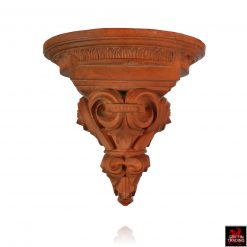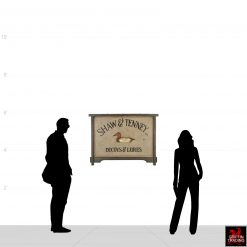This Joliet Prison Gothic transom window is a spectacular example of Gothic Revival architecture. The famous prison originally known as the Illinois State Penitentiary is well known for its Gothic architecture. This large transom is made of oak and is extremely well built. The elaborate trefoil and quatrefoil designs are more in common with something you would find in a church or castle.
The overall condition is very good and structurally sound. As to be expected, it has been painted over several times in its 150 year history. This is evident as most of the paint on the front side has been stripped away. This allows you to see the beautiful wood as well as the ornate design and craftsmanship. The reverse retains its original layers of yellow and cream colored paint, which was found throughout the correctional facility.
The Joliet Prison Gothic transom window is such a cool piece on so many levels. As a handsome example of Gothic Revival architecture, this would look amazing mounted or floated on a wall. Imagine the great shadows that would show when properly lit from above. As a historical artifact this would look amazing mounted on a steel stand like you would see in a museum. With all the interest in Distressed Architecture and Urban Decay, here is your chance to have piece for your own home or office.
About the Joliet Prison
The prison was started in 1858 in Joliet, Illinois. It was completed in the 1860’s and was built in the Gothic Revival style (see photo). The Architect was William Warren Boyington (1818–1898). He designed several structures in the Chicago area, including the Chicago Water Tower in Downtown. He was also once the mayor of Highland Park, Illinois.
As a correctional facility, it remained in use for almost 150 years before closing. Over this time it was also known as the Illinois State Penitentiary, Joliet Correctional Center, Joliet Penitentiary and the Collins Street Prison. Its distinct architecture and history has also made it well known in the film industry. The Prison Break TV show used the prison as a backdrop for the series. It was also featured in The Blues Brothers movie and Let’s Go To Prison.
- Any historical photos shown, are for reference only and are not included with this artwork. Any copyright or trademark of these images remains the property of its respective owner(s).

PERIOD: Circa 1860
ARCHITECTURAL STYLE: Gothic Revival
ARCHITECT: William W. Boyington (1818–1898)
LOCATION: Joliet, Illinois
MATERIALS: Carved Oak with paint
HEIGHT: 19 in. (48 cm)
WIDTH: 55.5 in. (141 cm)
DEPTH: 1.75 in. (4 cm)
CONDITION: Very good condition overall and structurally sound. The transom has bowed slightly due to age. The reverse retains several layers of the original paint as shown in the photos. See photos and the above description for more information.


